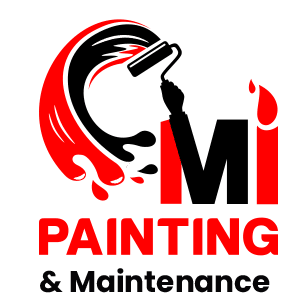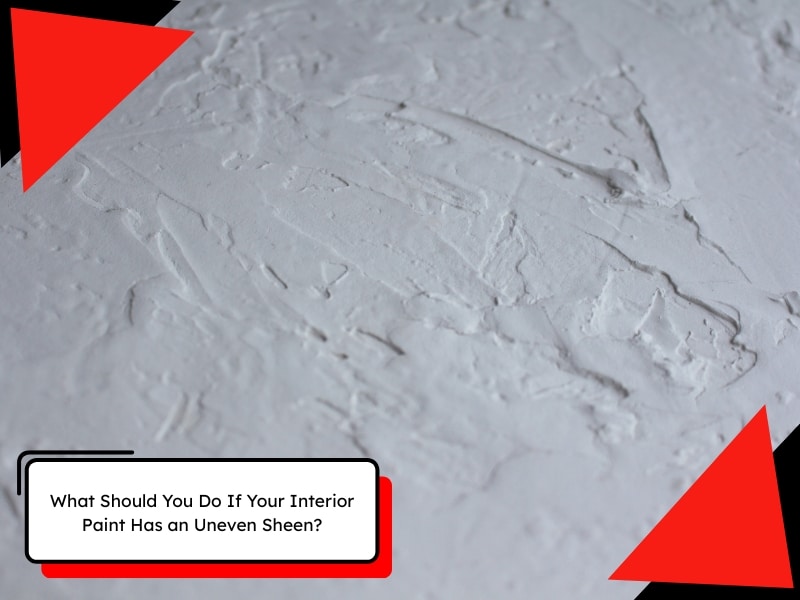An uneven paint sheen can leave a freshly painted wall looking patchy, streaky, or inconsistent. After investing time and money into a painting project, it’s frustrating to notice variations in gloss or dull spots. Fortunately, this issue can be fixed and prevented. This article explores the common causes of uneven paint sheen. It provides practical solutions to help you achieve a flawless, professional-looking finish, whether you’re painting a single room or an entire home.
Why does paint sheen turn out uneven?
Uneven paint sheen is a common issue that can arise due to improper application techniques, unfavourable environmental conditions, or low-quality paint products. Several factors contribute to this problem:
- Inconsistent drying time: Paint drying too quickly or slowly leads to sheen variations.
- Uneven application: Uneven paint application can result in a blotchy finish.
- Poor surface preparation: Dirt, grease, or old paint prevents proper adhesion, causing inconsistencies.
- Low-quality paint: Cheap paint lacks good coverage and results in an uneven sheen.
- Incorrect primer use: Some surfaces require primer for the topcoat to adhere correctly.
- Mixing different batches: Slight shade variations between batches can create an uneven look.
Address these root causes to achieve a smooth, professional finish. Proper surface preparation, high-quality materials, and consistent application techniques are essential. These steps ensure a flawless, long-lasting paint job with a uniform sheen.
Is there a best way to prevent uneven paint sheen?
Preventing uneven paint sheen starts before you dip your brush into a paint can. It begins with proper preparation, the right materials, and careful technique. Here’s how to achieve a smooth, even finish:
- Choose high-quality paint: Premium paints have better pigments and binders for an even finish.
- Use a primer: Priming creates a uniform base, especially on porous or previously painted surfaces.
- Maintain consistent paint mixing: Stir thoroughly before and during application to keep the sheen even.
- Apply paint evenly: Use consistent pressure and the same number of coats across the surface.
- Control environmental conditions: Avoid painting in extreme humidity or direct sunlight.
- Use proper tools: A high-quality roller or brush ensures a smooth application without streaks.
By using these application methods that prevent streaks, you’ll achieve a smoother, more professional finish while maintaining an even sheen. Consistent application, proper technique, and an efficient workflow will ensure your project looks flawless and expertly executed.
Which painting techniques ensure a consistent sheen?
Using the right techniques plays a crucial role in significantly improving the final result of your painting project. Here are some of the most effective methods to ensure your work is clean and professional:
- Apply paint in thin, even coats: Thick layers dry unevenly and create streaks.
- Work in one direction: Consistently rolling or brushing in the same direction prevents overlapping marks.
- Feather out edges: Softly blend paint edges to avoid visible overlap marks.
- Keep a wet edge: Don’t let paint dry between sections, as this can create lines.
- Avoid overworking the paint: Brushing or rolling too much can alter the sheen.
- Use a ‘W’ pattern when rolling: This technique distributes paint evenly across the surface. It also reinforces the importance of working in layers, as each pass ensures an even coat without overloading the surface, which could result in streaks or uneven sheen.
You can also resolve drying issues that contribute to uneven paint sheen by ensuring that your painting technique maintains a consistent pace and prevents areas from drying before you’ve finished applying the paint.
Which paint finishes are more prone to uneven sheen?
Not all paint finishes react the same way. Some are more forgiving, while others highlight imperfections:
Paint Finish | Prone to Uneven Sheen | Best Used For |
Flat | Low | Ceilings, low-traffic areas |
Matte | Low | Bedrooms, living rooms |
Eggshell | Medium | Dining rooms, hallways |
Satin | Medium-High | Kitchens, bathrooms |
Semi-Gloss | High | Doors, trim, high-moisture areas |
Gloss | Very High | Cabinets, furniture, feature walls
|
Choosing the right finish helps maintain a consistent sheen. If you find that your selected paint finish leads to uneven sheen, there are specific solutions for a blotchy or uneven paint finish indoors that can help smooth out imperfections and achieve a more consistent look.
When should you repaint to fix an uneven paint sheen?
If your paint job has an uneven sheen, repainting may be necessary. Here’s when it’s best to do so:
- When the sheen variations are noticeable: Repainting is the best solution if you see clear differences in gloss levels.
- When the problem areas are widespread: Touch-ups may work for minor issues, but large areas may require a full repaint.
- When paint feels patchy to the touch: The sheen issue is significant if you notice inconsistent texture.
- When previous fixes haven’t worked: If washing, buffing, or light sanding hasn’t evened out the sheen, repainting is needed.
- If the paint is old or damaged, it can wear unevenly over time, requiring a fresh coat.
If your paint sheen is uneven or touch-ups don’t work, repainting the entire area with proper techniques will fix the problem.
Does humidity affect the final paint sheen?
Humidity significantly affects how paint dries and its final appearance.. Understanding its effects can help you achieve a smooth, even finish. Here’s why:
- High humidity slows drying: This can cause uneven absorption and inconsistent sheen.
- Moisture can cause blotching: Water in the air affects how paint adheres to surfaces.
- Paint can appear streaky: If humidity levels fluctuate during drying, you may see variations in sheen.
- Extreme humidity causes paint to bubble: If moisture gets trapped, it can lead to blistering and peeling.
- Ventilation helps: Running a fan or dehumidifier can prevent humidity-related issues.
Humidity Level | Effect on Paint |
Low (Below 40%) | Paint may dry too quickly, leading to uneven sheen |
Ideal (40-60%) | Best range for smooth, even drying |
High (Above 60%) | Best range for smooth, even drying |
While humidity is a crucial factor in paint drying, the impact of brush cleanliness on a flawless paint surface is also vital. Suppose your brush has leftover paint, dust, or contaminants. These can affect how paint adheres to the surface, especially in high-humidity conditions, leading to an uneven sheen or finish.
Conclusion
Uneven paint sheen can be frustrating, but understanding its causes and solutions ensures better results. Proper surface prep, high-quality materials, and careful application techniques provide a smooth, professional look. If you’re dealing with an uneven sheen, assessing the issue and taking corrective measures will bring your walls back to perfection.
If you need assistance with your next painting project or aren’t sure how to tackle an uneven sheen, get in touch with Mi Painting & Maintenance for expert advice and service.


